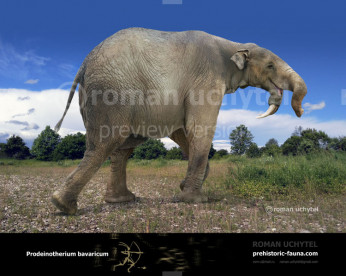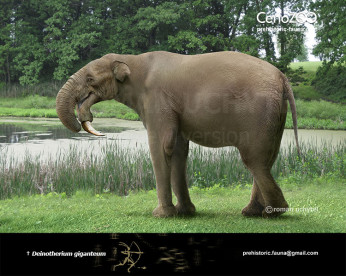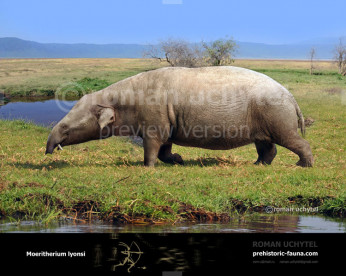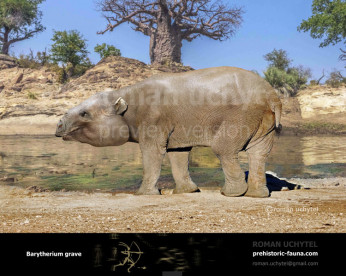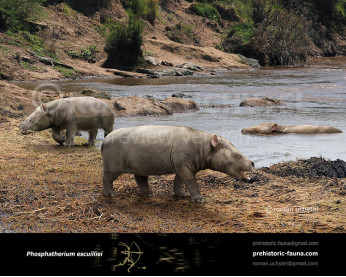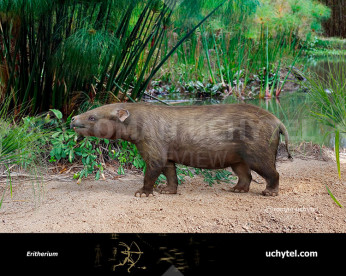Numidotherium
24002400
Numidotherium (†Numidotherium (Jaeger, 1986))
Class: Mammalia
Order: Proboscidea
Family: †Numidotheriidae
Size: length - 40 cm, height ~100 сm, weight - 250 kg
Known locations: North Africa
Time period: early/middle Eocene (46 million years ago)
Numidotherium is an extinct genus of early proboscideans, that lived during the middle Eocene of North Africa some 46 million years ago. It was about 100 cm tall at the shoulder and weighed about 250-300 kg.
This is one of the earliest representatives of the Proboscidea and was larger than its predecessors Phosphatherium and Eritherium. Furthermore, it was characterized by a short trunk and quite long legs. The skull had a length of 37 cm and a raised cranial roof and had widely spreading zygomatic arches.
The type species, N. koholense, is known from an almost complete skeleton from the site of El Kohol, southern Algeria, dating from the early/middle Eocene period. The animal had the size of a modern tapir. In appearance, it was more slender and more plantigrade than an elephant, its closest modern relative.
Оплата
У Вас є кілька зручних способів купівлі зображення: кредитна чи дебетова картка Visa, Mastercard, Maestro; PayPal або банківський переказ
Numidotherium (†Numidotherium (Jaeger, 1986))
Class: Mammalia
Order: Proboscidea
Family: †Numidotheriidae
Size: length - 40 cm, height ~100 сm, weight - 250 kg
Known locations: North Africa
Time period: early/middle Eocene (46 million years ago)
Numidotherium is an extinct genus of early proboscideans, that lived during the middle Eocene of North Africa some 46 million years ago. It was about 100 cm tall at the shoulder and weighed about 250-300 kg.
This is one of the earliest representatives of the Proboscidea and was larger than its predecessors Phosphatherium and Eritherium. Furthermore, it was characterized by a short trunk and quite long legs. The skull had a length of 37 cm and a raised cranial roof and had widely spreading zygomatic arches.
The type species, N. koholense, is known from an almost complete skeleton from the site of El Kohol, southern Algeria, dating from the early/middle Eocene period. The animal had the size of a modern tapir. In appearance, it was more slender and more plantigrade than an elephant, its closest modern relative.

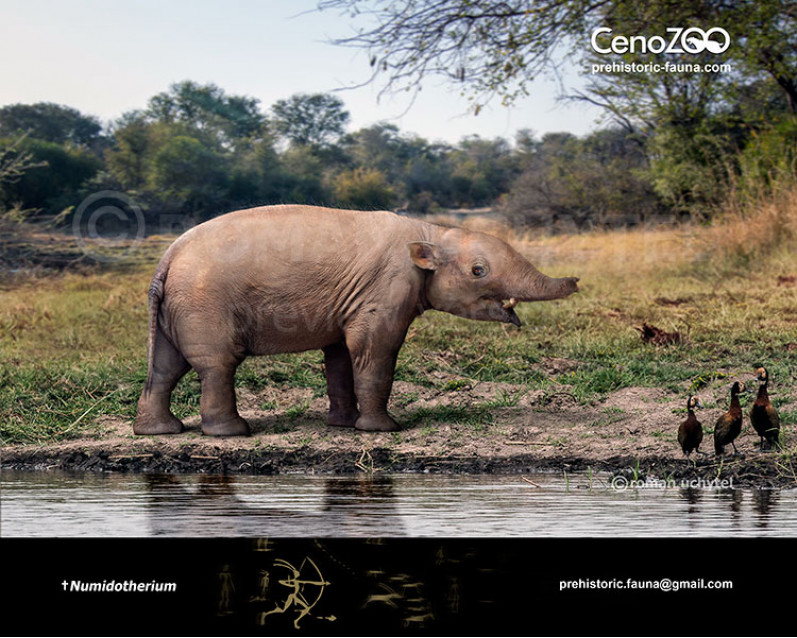
-797x638.jpg)
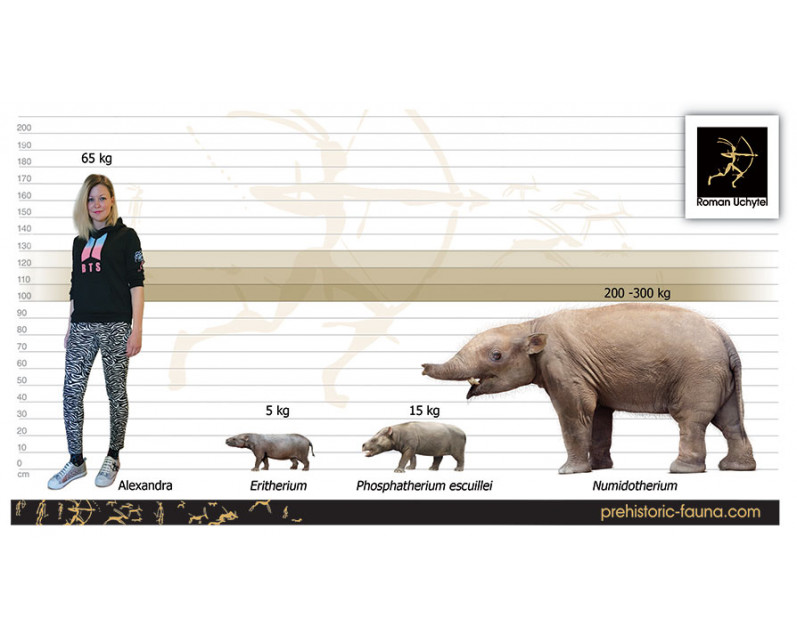

-70x56.jpg)

